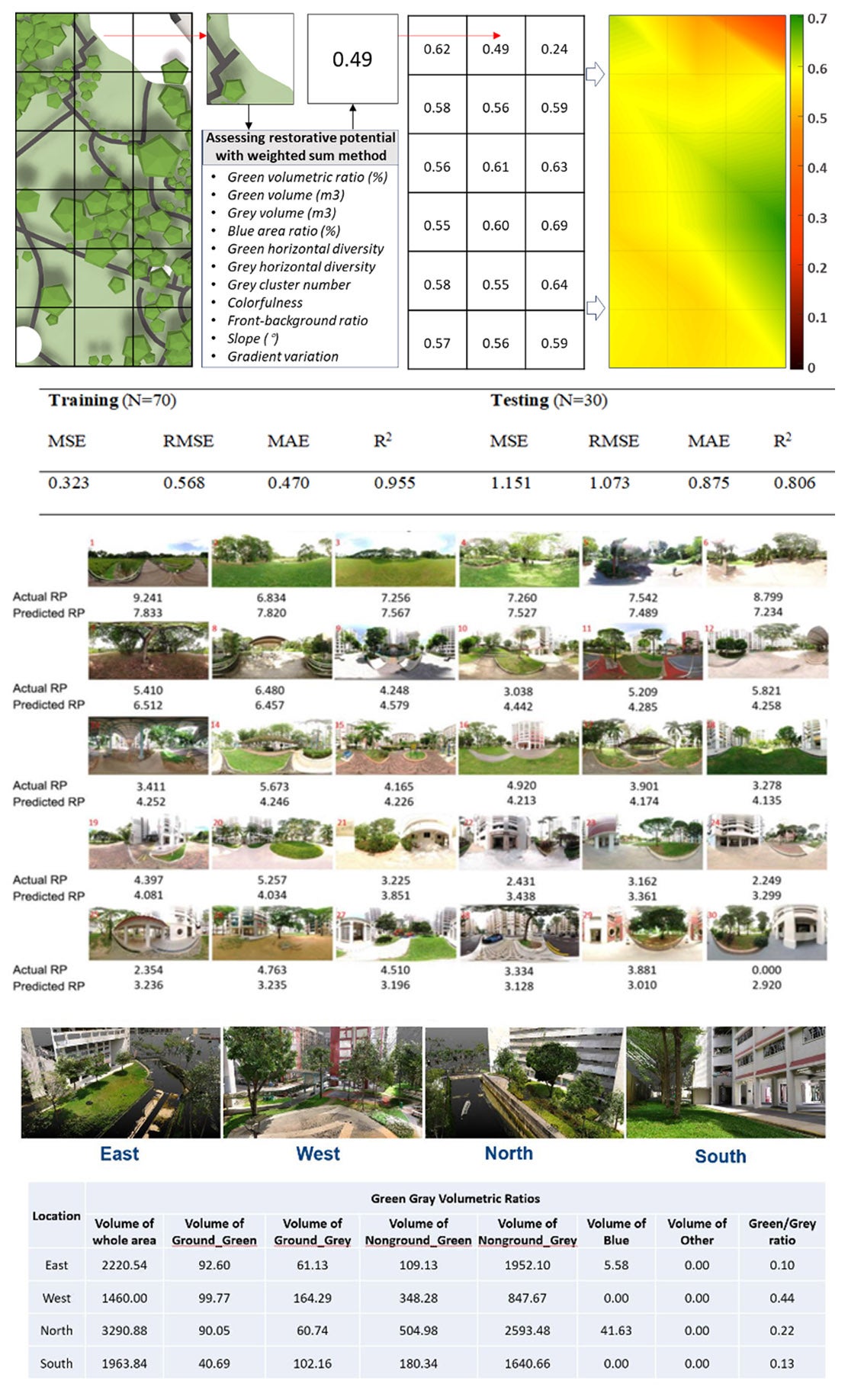Research Project: Assessment of Visual Quality of Urban Landscapes in Health Promotion
TEAM
Dr. Lin Shengwei, Ervine (NUS) Assoc. Prof. Ho Chun Man Roger (NUS) Prof. Tan Puay Yok (NUS) Asst. Prof. Qi Jinda (NUS) Dr. Zhang Xudong (NUS) Radha Waykool (NUS) Dr. Angelia Sia (NParks) Dr. Agnieszka Olszewska-Guizzo (NeuroLandscape)

The next time you head out for a stroll in your nearby park, try to pick a nice spot that seems like a nice place to practice some mindfulness or meditation. Once you’ve found a spot, try to see if you can understand why you picked this spot. That’s what this project is trying to uncover, why did you pick this spot and how can we create more landscapes like this for you and everyone else to enjoy.
Most would agree that visiting a park is an enjoyable experience and part of that enjoyment might come from the well-established understanding that exposure to natural environments creates noticeable health benefits. The findings from this research project not only further reinforce the understanding that nature exposure provides a degree of mental restoration but that there are certain ways in which we can alter the composition of these landscapes to further improve on this effect.
Furthermore, if a stroll in the park has such benefits, why don’t we simply bring the park to our doorsteps instead? An underlying idea behind the project was to study the effects of natural elements in an otherwise urban environment. Simply put, do the trees, shrubs, grass and other elements that are planted around your HDB estate actually help in your mental well-being. Based on the research findings, yes but it’s complicated.
While vegetation has found indeed to be an important factor, so was the way the vegetation is composed within the landscape in question. For example, the more fragmented the planting scheme, the poorer the restorative effects while the type of vegetation mattered as well, with trees being more important than lawns. To complicate matters even further, while more trees is seen as a positive, when they start to block the view of the sky, an inverse negative effect is observed.
The above might seem intuitive since most would understand that standing under the shade of a grove of trees which overlook a nice scene is likely to be enjoyable, comfortable and potentially restorative. The difference however is now we have a means to measure and predict this effect by mathematically assessing any existing landscape.
This ability to measure the landscape opens up a possibility of designing and testing landscapes before they are built in order to optimize the potential benefits they might have on our mental well-being. Imagine parks and gardens that can be designed not merely by aesthetical choices by the designers but also supported by scientific evidence.
Qi, J., Lin, E.S., Tan, P.Y., Zhang, X., Ho, R., Sia, A., Olszewska-Guizzo, A., Waykool, R., 2024. Applying 3D spatial metrics for landscape planning: Creating and measuring landscape scenarios by a point cloud-based approach. Ecological Informatics 79, 102436. https://doi.org/10.1016/j.ecoinf.2023.102436
Qi, J., Lin, E.S., Tan, P.Y., Zhang, X., Ho, R., Sia, A., Olszewska-Guizzo, A., Waykool, R., 2023. Representing the landscape visual quality of residential green spaces in Singapore with 3D spatial metrics. Urban Forestry & Urban Greening 90, 128132. https://doi.org/10.1016/j.ufug.2023.128132
Qi, J., Lin, E.S., Yok Tan, P., Chun Man Ho, R., Sia, A., Olszewska-Guizzo, A., Zhang, X., Waykool, R., 2022. Development and application of 3D spatial metrics using point clouds for landscape visual quality assessment. Landscape and Urban Planning 228, 104585. https://doi.org/10.1016/j.landurbplan.2022.104585
Zhang, X., Lin, E.S., Tan, P.Y., Qi, J., 2023a. Linking Image-based Metrics to 3D-model-based Metrics for Assessment of Visual Landscape Quality. Journal of Digital Landscape Architecture 2023/05.
Zhang, X., Lin, E.S., Tan, P.Y., Qi, J., Ho, R., Sia, A., Waykool, R., Song, X.P., Olszewska-Guizzo, A., Meng, L., Cao, Y., 2024a. Beyond just green: Explaining and predicting restorative potential of urban landscapes using panorama-based metrics. Landscape and Urban Planning 247, 105044. https://doi.org/10.1016/j.landurbplan.2024.105044
Zhang, X., Lin, E.S., Tan, P.Y., Qi, J., Waykool, R., 2023b. Assessment of visual landscape quality of urban green spaces using image-based metrics derived from perceived sensory dimensions. Environmental Impact Assessment Review 102, 107200. https://doi.org/10.1016/j.eiar.2023.107200
Zhang, X., Qi, J., Lin, E.S., Tan, P.Y., Ho, R., Sia, A., Song, X.P., Waykool, R., Olszewska-Guizzo, A., 2024b. Towards healthy cities: Modeling restorative potential of urban environments by coupling LiDAR-derived 3D metrics with panorama-based online survey. Environmental Impact Assessment Review 106, 107497. https://doi.org/10.1016/j.eiar.2024.107497